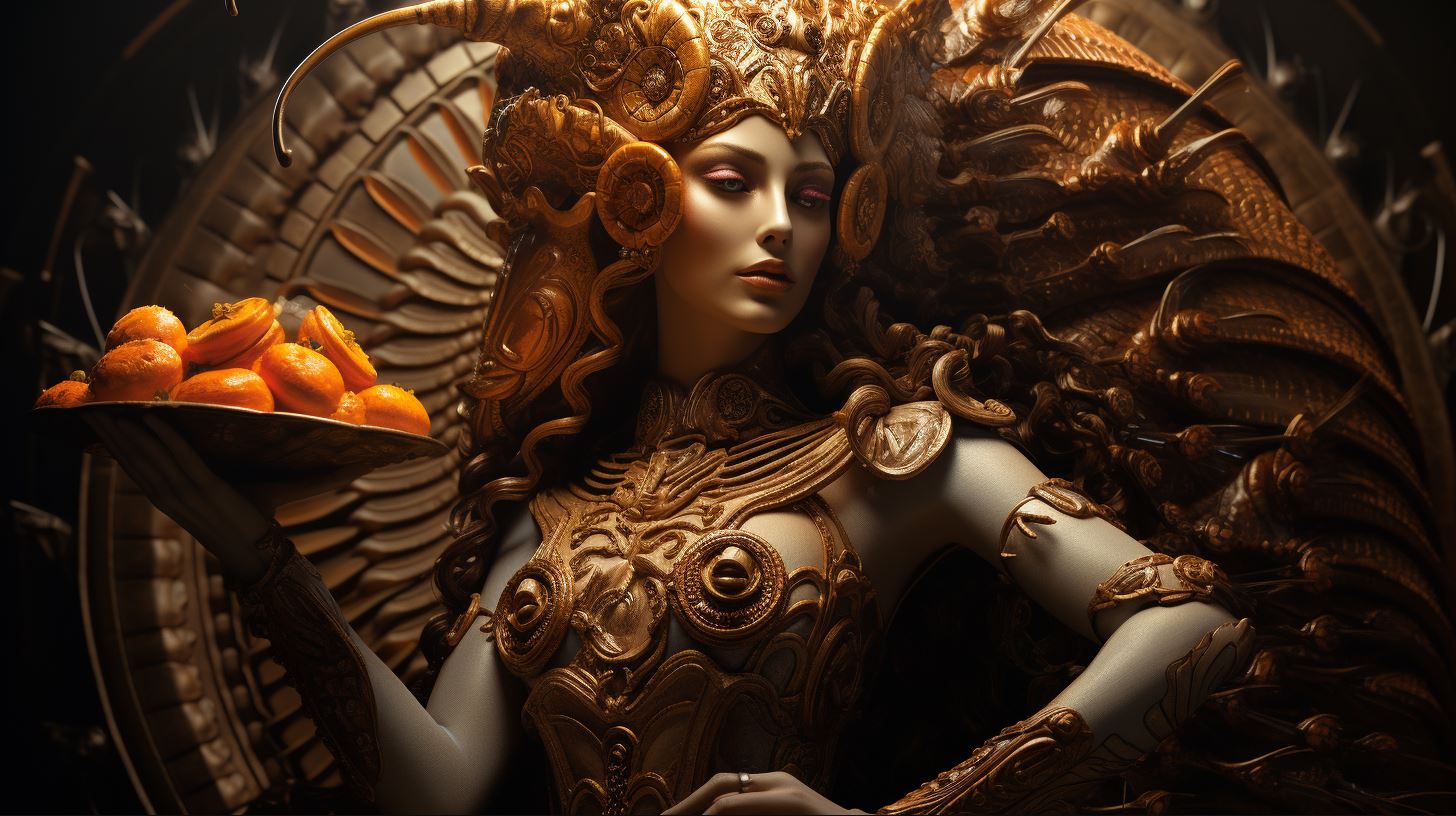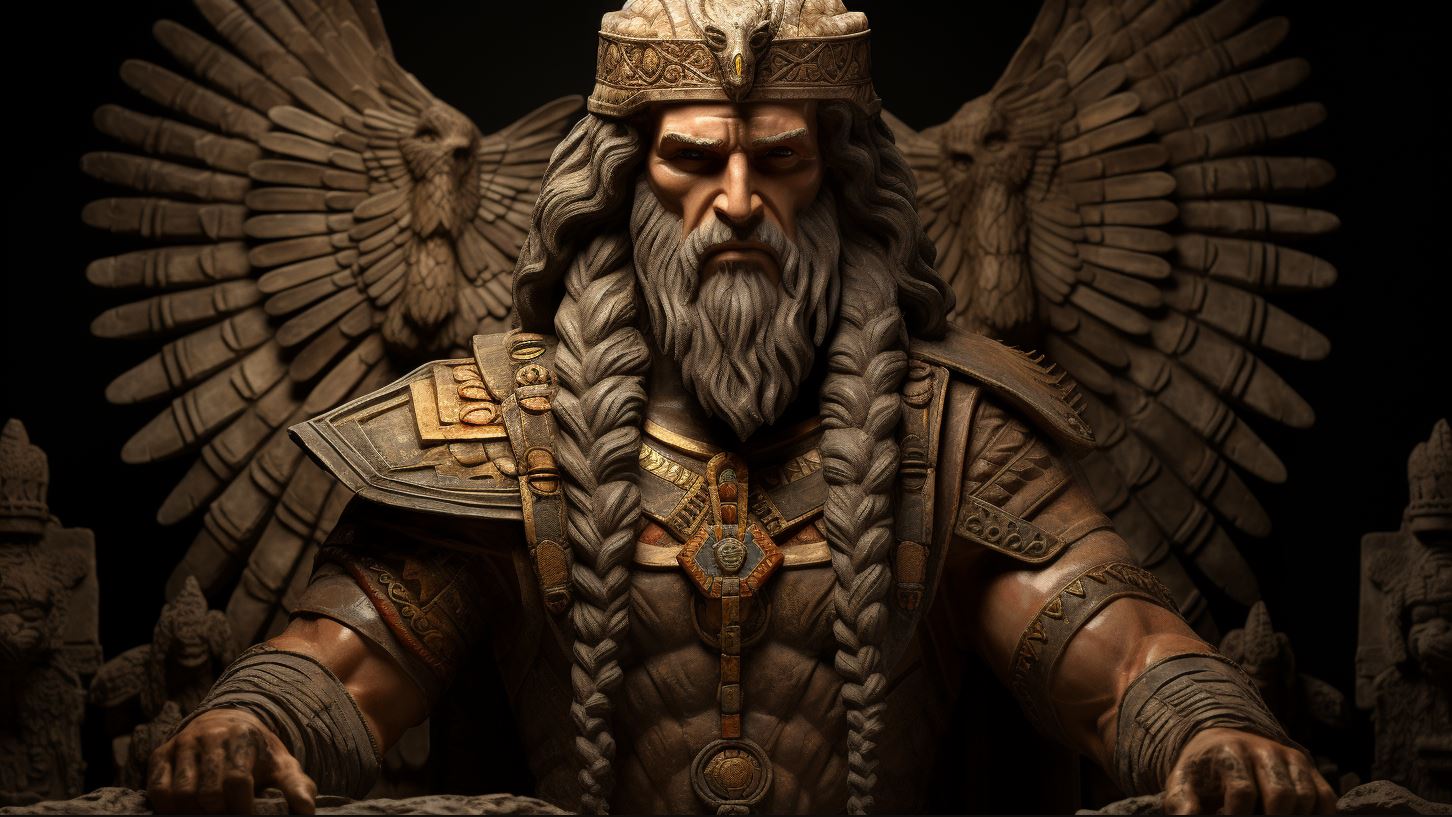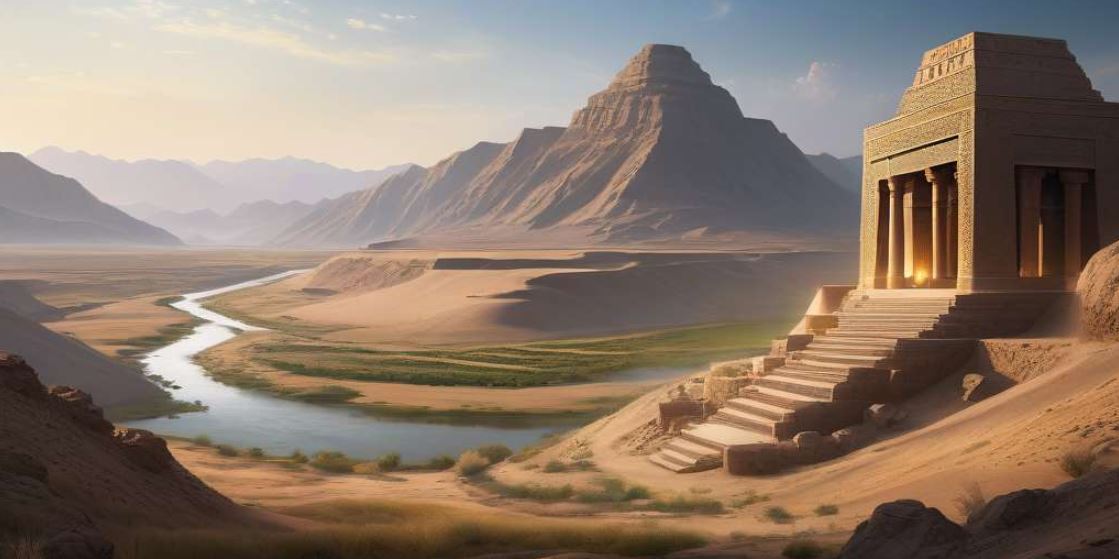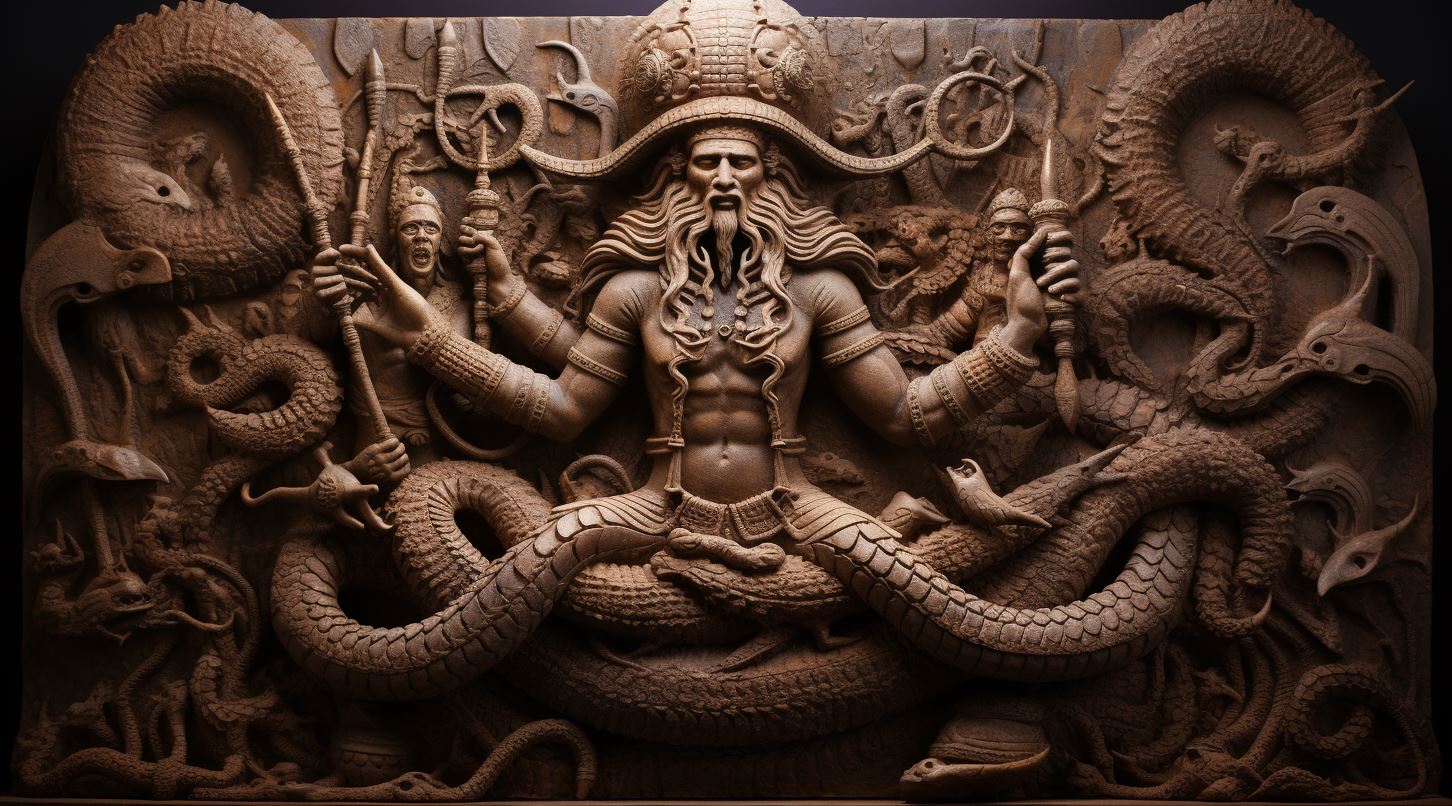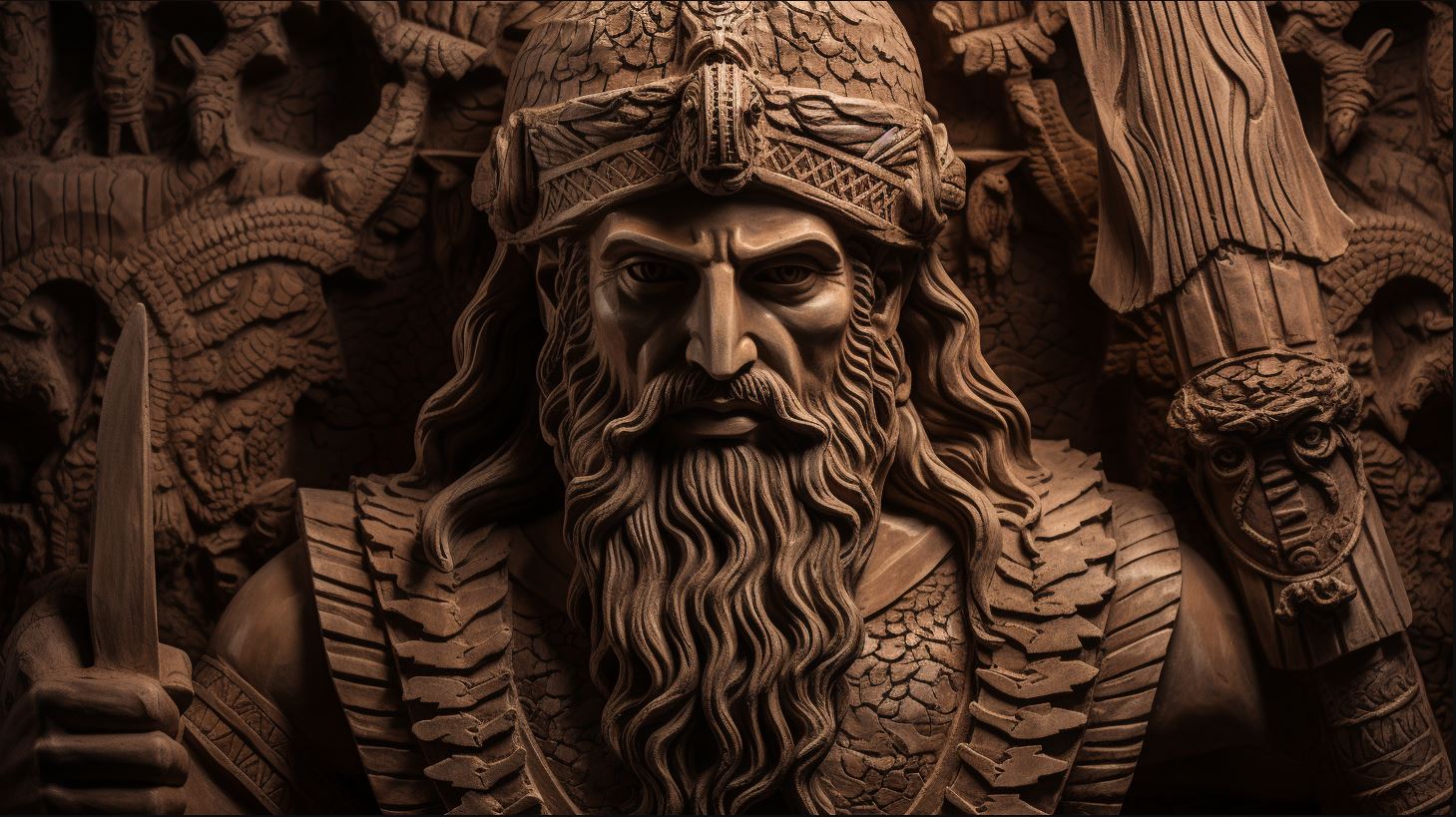Lahmu God: Unveiling the Mysteries of Mesopotamian Deities

Lahmu and Lahamu, twin deities from ancient Mesopotamian mythology, hold significant importance in understanding the early cosmology. They are believed to be the first gods born from the chaotic union of Apsu and Tiamat.
Lahmu, depicted as a snake or bearded man, acted as a guardian at the temple of Abzu in Eridu. Their connection to Tiamat and possible role as progenitors of Anshar and Kishar highlight their significance.
Additionally, Lahmu’s presence in rituals and depictions in Mesopotamian art further deepens the understanding of this divine entity. Explore their origins, mythological connections, and role in different traditions.
Origins and Development of Lahmu and Lahamu
Lahmu and Lahamu, twin deities from ancient Mesopotamian mythology, play a significant role in the early cosmology of this rich civilization.
Believed to have emerged from the chaos resulting from the union of Apsu and Tiamat, they hold a primordial position in the pantheon.
These divine beings are closely associated with the concept of lodo or sediment in water, often depicted as serpents in Mesopotamian art.
While some interpretations consider them synonymous with Tiamat, they are distinct entities with their own characteristics and attributes.
The exact origins and development of Lahmu and Lahamu are still subjects of scholarly debate.
Artifacts and textual evidence indicate their presence in the earliest religious practices of ancient Mesopotamia.
Their significance extends beyond their individual roles. Lahmu and Lahamu are believed to be the progenitors of Anshar and Kishar, representing the celestial and terrestrial realms respectively.
This celestial lineage highlights their importance in the cosmogony of Mesopotamia.
The understanding of the origins and development of Lahmu and Lahamu provides a crucial foundation for exploring the intricate mythological and ritualistic aspects associated with these ancient deities.
Lahmu and Lahamu in Mythological Texts
In ancient Mesopotamian mythological texts, Lahmu and Lahamu hold significant roles, showcasing their importance in the cosmological narrative. These twin deities, born from the primordial chaos of Apsu and Tiamat, are often associated with the creation and primordial energies.
Mythological texts mention Lahmu and Lahamu in various contexts, shedding light on their nature and attributes. They are often described as protectors, with Lahmu guarding the gates of the temple of Abzu in Eridu, symbolizing their role as guardians and gatekeepers.
Furthermore, the connection between Lahmu and Lahamu with Tiamat is a recurring theme in these texts. Some interpretations suggest that they could be synonymous with Tiamat herself, representing different aspects or manifestations of her power.
These texts also highlight the relationship between Lahmu and Lahamu with other deities, specifically Anshar and Kishar. Anshar and Kishar are considered to represent the sky and earth, respectively, and Lahmu and Lahamu are believed to be their progenitors.
Through their appearances and mentions in diverse mythological narratives, Lahmu and Lahamu contribute to the rich tapestry of Mesopotamian cosmology and provide insight into the beliefs and symbols of the ancient civilization.
The Role of Lahmu in Mesopotamian Rituals
Within the context of Mesopotamian culture and religious practices, Lahmu held a significant role in various rituals. As a divine entity associated with protection and beneficence, Lahmu was often invoked to bring blessings and ward off malevolent forces.
One prominent ritual involving Lahmu was the purification ceremony, where individuals sought spiritual cleansing and protection. Lahmu’s presence was believed to cleanse impurities and provide a shield against negative influences. Participants would offer prayers and libations, invoking Lahmu’s divine power to bring forth purification and prosperity.
Furthermore, Lahmu played a pivotal role in the rituals associated with the consecration of temples. As a guardian deity, Lahmu was called upon to protect the sacred space from malevolent entities and ensure the sanctity of the temple.
This involved elaborate ceremonies, offerings, and invocations to appease Lahmu and secure divine favor.
In addition to their protective functions, Lahmu’s role extended to fertility rites. Lahmu was associated with the abundance of the earth and its resources.
In fertility rituals, Lahmu was invoked to ensure bountiful harvests, the prosperity of livestock, and the well-being of the community. These rituals were crucial for agricultural societies heavily reliant on the fertility of the land.
Overall, Lahmu’s involvement in Mesopotamian rituals showcased their elevated status and the significance attributed to them. Whether it was purifying, protecting temples, or ensuring fertility, the presence of Lahmu was considered essential to maintain cosmic harmony and garner divine blessings.
Lahmu and Lahamu: Protective and Beneficent Deities
Lahmu and Lahamu, the ancient Mesopotamian deities, hold a significant role as protective and beneficent beings. Revered for their guardianship and positive influence, they were believed to watch over temples and offer divine protection to those who worshipped them.
Considered as symbols of stability and order, Lahmu and Lahamu were revered for their ability to bring prosperity and favor to the mortal realm. They were believed to bring blessings and ensure the well-being of communities, acting as intermediaries between the mortal world and the divine.
- They were often associated with the preservation of cosmic order, ensuring the harmony between heaven and earth.
- Lahmu and Lahamu were regarded as guardians of sacred spaces, such as the temple of Abzu in Eridu, where Lahmu stood as a vigilant protector at its gates.
- Their presence and veneration in rituals were believed to enhance the efficacy of religious practices and offerings, bringing divine favor and appeasing the gods.
With their serpent-like forms and human-like attributes, Lahmu and Lahamu embodied the power and protection associated with these divine beings.
Their roles in Mesopotamian mythology and rituals exemplify their importance in the ancient pantheon.
In conclusion, Lahmu and Lahamu served as protective and beneficent deities, ensuring the well-being and prosperity of the mortal realm.
Through their guardianship and positive influence, they played a crucial role in maintaining cosmic order and fostering a harmonious connection between the divine and human realms.
Mythological Connections: Lahmu and Lahamu with Tiamat
Lahmu and Lahamu, the twin deities of Mesopotamian mythology, share a profound connection with Tiamat, the primordial goddess.
While they represent the birth of gods from the union of Apsu and Tiamat, some scholars argue that Lahmu and Lahamu might even be synonymous with Tiamat herself. This connection suggests a complex interplay of cosmic forces and the emergence of divine entities.
In various mythological texts, we find references to Lahmu and Lahamu’s connection to Tiamat. Their roles as progenitors of Anshar and Kishar further reinforce their association with cosmic principles. Lahmu, often depicted as a protective figure, guards the sacred temple doors of Abzu in Eridu, symbolizing his divine role in cosmic order.
Their presence in both textual and artistic depictions deepens our understanding of these gods. Through inscriptions on ancient monuments and ritual texts, we can decipher the divine symbols associated with Lahmu and Lahamu, highlighting their significance in Mesopotamian religious practices.
Exploring the mythological connections between Lahmu, Lahamu, and Tiamat unveils the intricate fabric of cosmic creation and the intricate relationship between these powerful deities in the Mesopotamian pantheon.
Lahmu and Lahamu’s Relationship with Anshar and Kishar
Lahmu and Lahamu, the twin deities of Mesopotamian mythology, have a significant relationship with Anshar and Kishar, who are believed to represent the heavens and the earth, respectively.
This connection between the four deities forms a crucial aspect of the ancient cosmological beliefs.
According to mythological texts, Lahmu and Lahamu were the progenitors of Anshar and Kishar, giving them a prominent role in the divine hierarchy.
Anshar was regarded as the patriarch of the gods, while Kishar represented the maternal essence of the earth. Together, the four deities represented the fundamental elements of creation.
The relationship between Lahmu and Lahamu with Anshar and Kishar symbolizes the cosmic balance and harmony between the celestial and earthly realms.
Their combined influence shaped the ancient Mesopotamian worldview, where the heavens and the earth were interconnected and interdependent.
- Lahmu and Lahamu are considered primordial deities.
- Anshar and Kishar personify the celestial and earthly realms.
- The connection between these deities signifies the cosmic balance.
- Their roles in creation laid the foundation for Mesopotamian beliefs.
Understanding the intricate relationship between Lahmu, Lahamu, Anshar, and Kishar enables us to grasp the fundamental principles behind the ancient Mesopotamian cosmogony and their perspective on the order of the universe.
Representations of Lahmu in Mesopotamian Art
In the rich tapestry of Mesopotamian art, the figure of Lahmu holds a prominent place. Depicted in various forms, Lahmu is often portrayed as a guardian deity, symbolizing protection and beneficence.
One prevalent representation shows Lahmu as a bearded figure, sometimes holding a staff or a pinecone-shaped object. This imagery signifies Lahmu’s role as a gatekeeper, guarding the entrance to the sacred temple of Abzu in Eridu.
Lahmu’s connection to Lahamu, as one of the creatures of Tiamat, further influences their artistic depictions. The association with Tiamat, the primordial goddess of chaos, adds depth to Lahmu’s significance. Some representations also show Lahmu as a serpent-figure, linking them to their origins in the primordial waters.
The art of ancient Mesopotamia beautifully captures the essence of Lahmu’s divine nature and importance in the cosmological beliefs of the time.
Within the realm of Mesopotamian art, Lahmu is often intertwined with themes of creation and protection.
Their presence in monumental inscriptions and temple reliefs solidifies their sacred role. The research of B. Landsberger even revealed that the iconic naked hero figure in Mesopotamian art is, in fact, Lahmu, adding another layer of understanding to their representation.
By studying the various artistic portrayals of Lahmu, we delve deeper into their divine characteristics and their connection to the larger mythological framework of ancient Mesopotamia. The fusion of art and religious belief creates a captivating visual narrative, illuminating the significance of Lahmu within the ancient society’s worldview.
Lahmu God in Babylonian and Assyrian Traditions
In Babylonian and Assyrian traditions, Lahmu holds a prominent position as a primordial deity. Often paired with his sister Lahamu, Lahmu is associated with the concepts of protection and beneficence. As primordial beings, they represent the very foundations of the cosmos.
Within Babylonian mythology, Lahmu and Lahamu are closely linked to the creation of the universe, as described in the Enuma Elish. It is believed that Lahmu and Lahamu played crucial roles in establishing order from chaos, setting the stage for the subsequent divine beings.
Furthermore, their connection with Anshar and Kishar, who symbolize the sky and the earth respectively, reinforces their significance in shaping the natural world. Lahmu and Lahamu act as vital intermediaries between the divine and mortal realms, influencing various aspects of Mesopotamian life.
Evidence of Lahmu and Lahamu’s influence can be found in Babylonian and Assyrian art, where their depiction reveals a rich tapestry of symbolism and divine power. The intricate inscriptions on monuments and the use of specific amulets in rituals further demonstrate their presence in the spiritual practices of ancient Mesopotamia.
Overall, the presence of Lahmu and Lahamu in Babylonian and Assyrian traditions showcases their enduring significance and their role in shaping the collective consciousness of these civilizations. As comprehend the depths of Mesopotamian cosmology, the influence of Lahmu and Lahamu becomes increasingly apparent.
.












